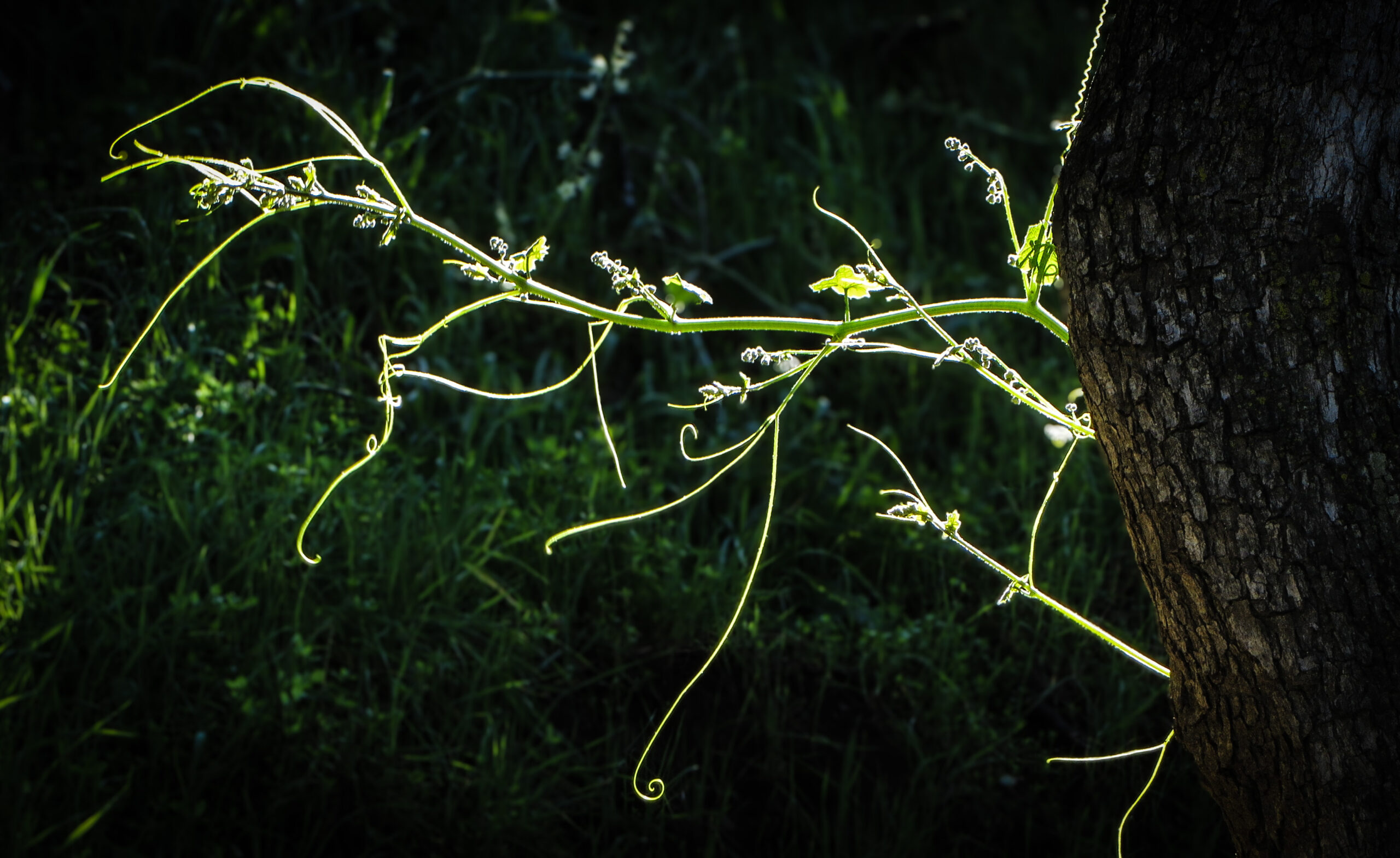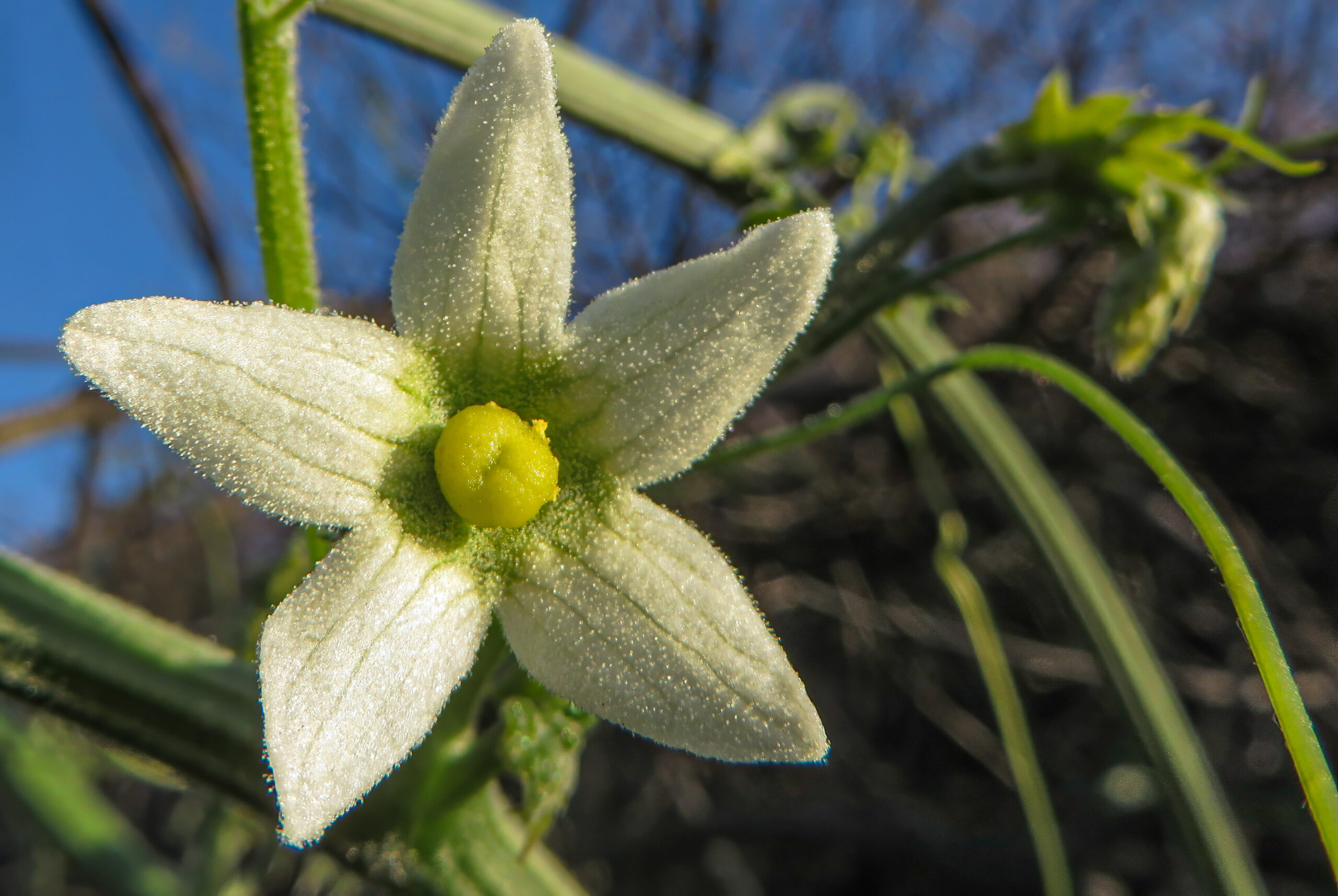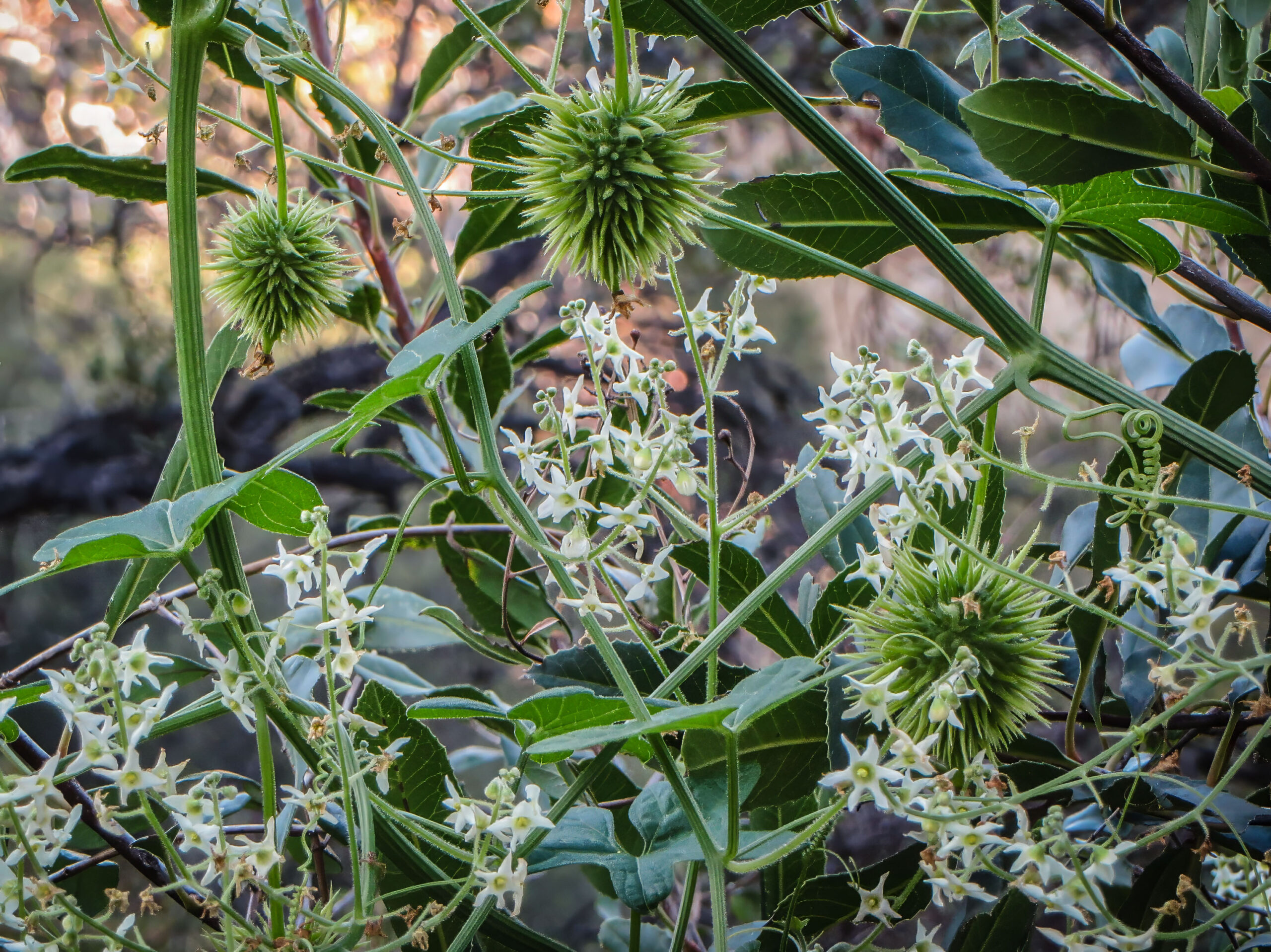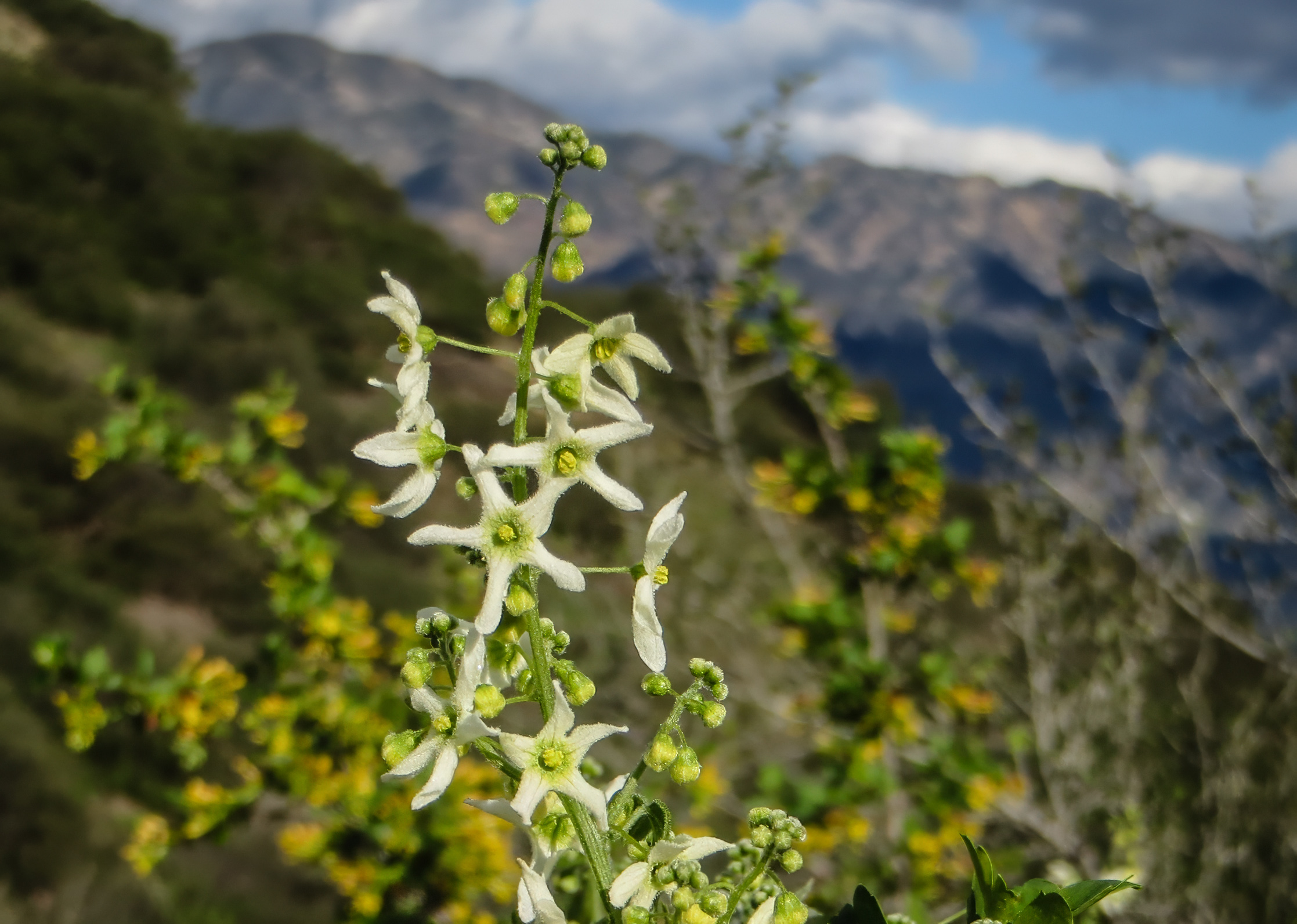Occasional notes on the wildflowers of 91011

Some of our native plants get no respect. In the case of Chilicothe, it’s a matter of mistaken identity. Marah macrocarpa is a native vine that loves to curlicue across the meadow or, better yet, twine its way up anything handy — a tree, a shrub, a fence, maybe even the doghouse in your backyard. But at Cherry Canyon, it’s inevitable that some hikers will see this vine and act as if it’s a pernicious parasite. You can see where they’ve ripped it loose from trees and shrubs, as if they were doing a favor to Mother Nature. Indeed, I once encountered a walker on one of our trails who was feverishly pulling this vine off the chainlink fence where its greenery had been nicely hiding a parking lot. When challenged, he exclaimed, “No, it’s kudzu!” (Never mind that there’s virtually NO kudzu west of the Rockies.)
PLEASE, DON’T DO THIS! Chilicothe isn’t kudzu. It’s not a parasite. It grows on and over other plants, but it photosynthesizes for itself and doesn’t feed on them. And it’ll be dried and gone by summer’s end.

Marah macrocarpa is one of five California species of Marah that are commonly known as Wild Cucumbers, though they are all very distant (and reportedly toxic) relatives of edible cucumbers. They are also called Man-Root, on account of their tuberous roots, which can reach an immense size and weigh well over 200 pounds. But only M. macrocarpa is also known as Chilicothe, evidently a Native American name or the English corruption of such a name.

Chilicothe usually appears after the first winter rains, so its blossoms actually signal the promise of spring! It’s common all over Cherry Canyon as well as almost everywhere else. The gentle lines of its graceful vines can trail across a meadow or extend into thin air. Try studying the way no two vines trace the same arc — truly, they are lovely exercises in the geometry of curves. The flowers are usually five-point white stars with green centers. The fruits are also distinctive: egg-shaped and covered with spines, which is why they vaguely resemble cucumbers. But when these spiky balls dry out, they leave behind a porous skeleton that closely resembles a loofa sponge — and some people have used them as such.

Where and when to find it. Chilicothe is essentially a Southern California species, ranging from around Santa Barbara through San Diego (though its range overlaps a a bit with M. fabaceae). Almost all of the trails at Cherry Canyon will host the tendrils and flowers of this climbing vine from late December through the end of spring. The spiky gourd-like fruits will appear fairly early in this period as well.
- For more about Marah macrocarpa, visit Wikipedia.
- For a compact introduction to all five Marah species in California, go here.
- For information about growing this plant in your yard, visit Calscape.org.
- For distribution maps, taxonomy, and more photos, visit Calflora.org.
- And go here to read other occasional notes on the wildflowers of 91011.

